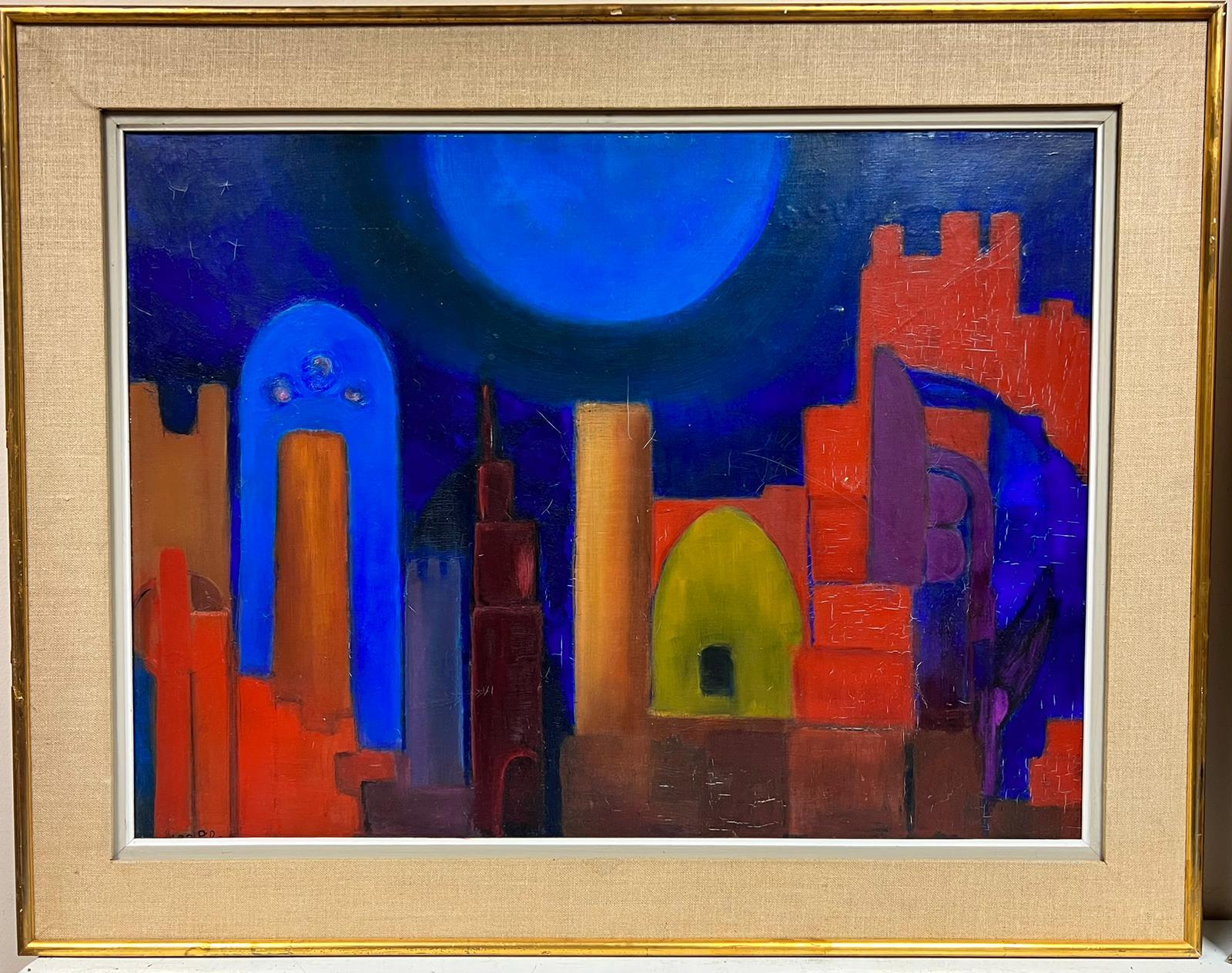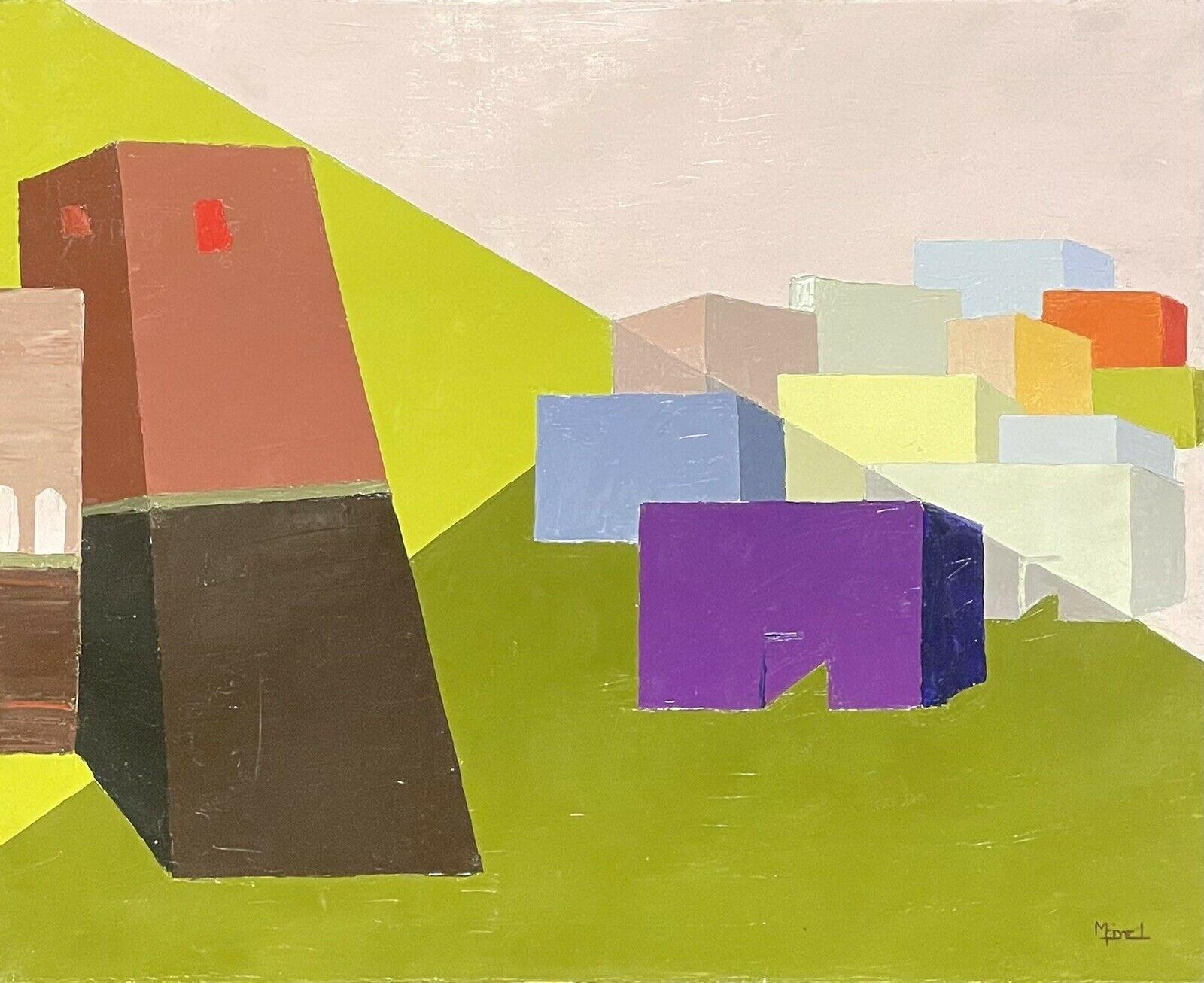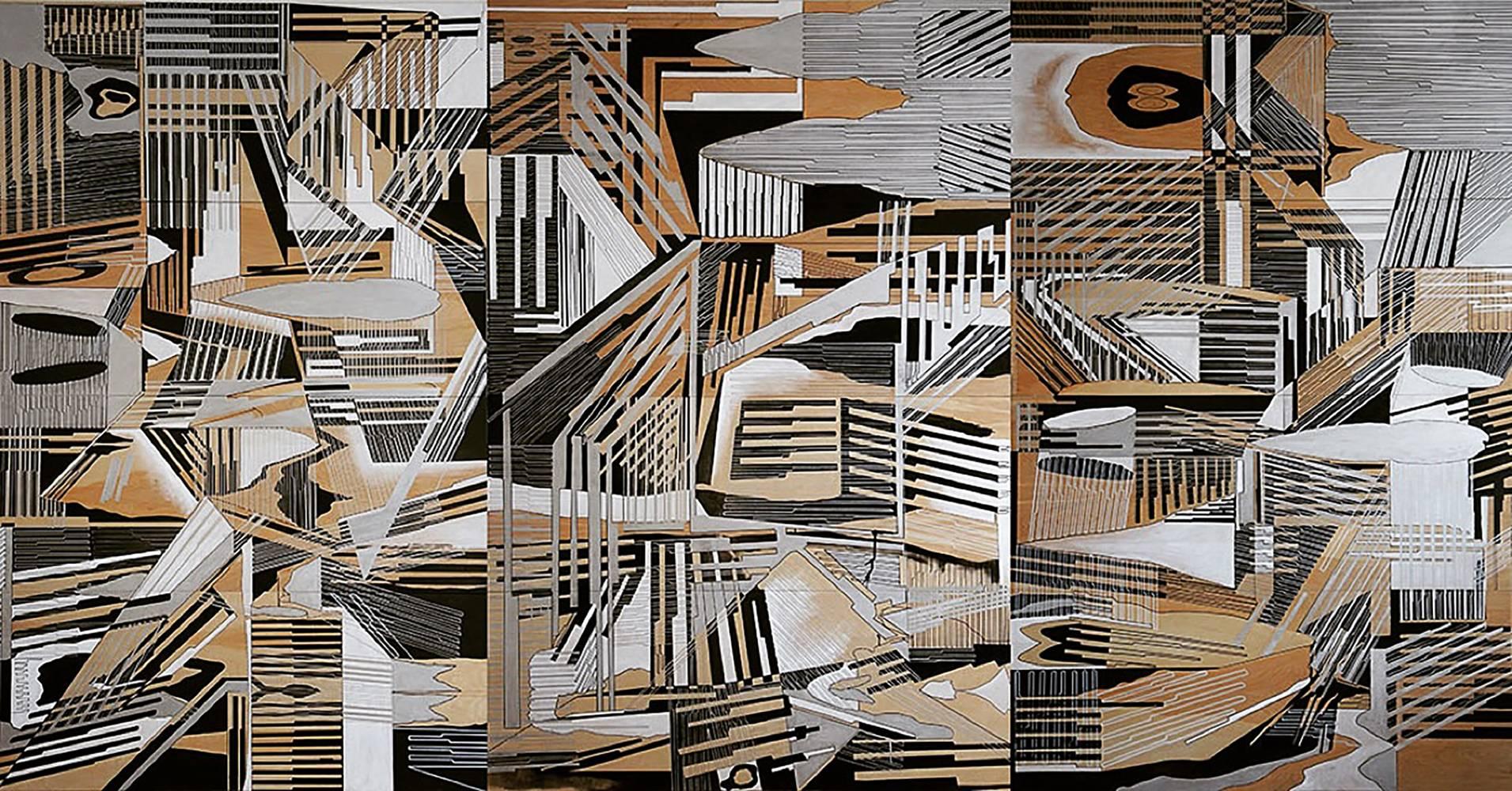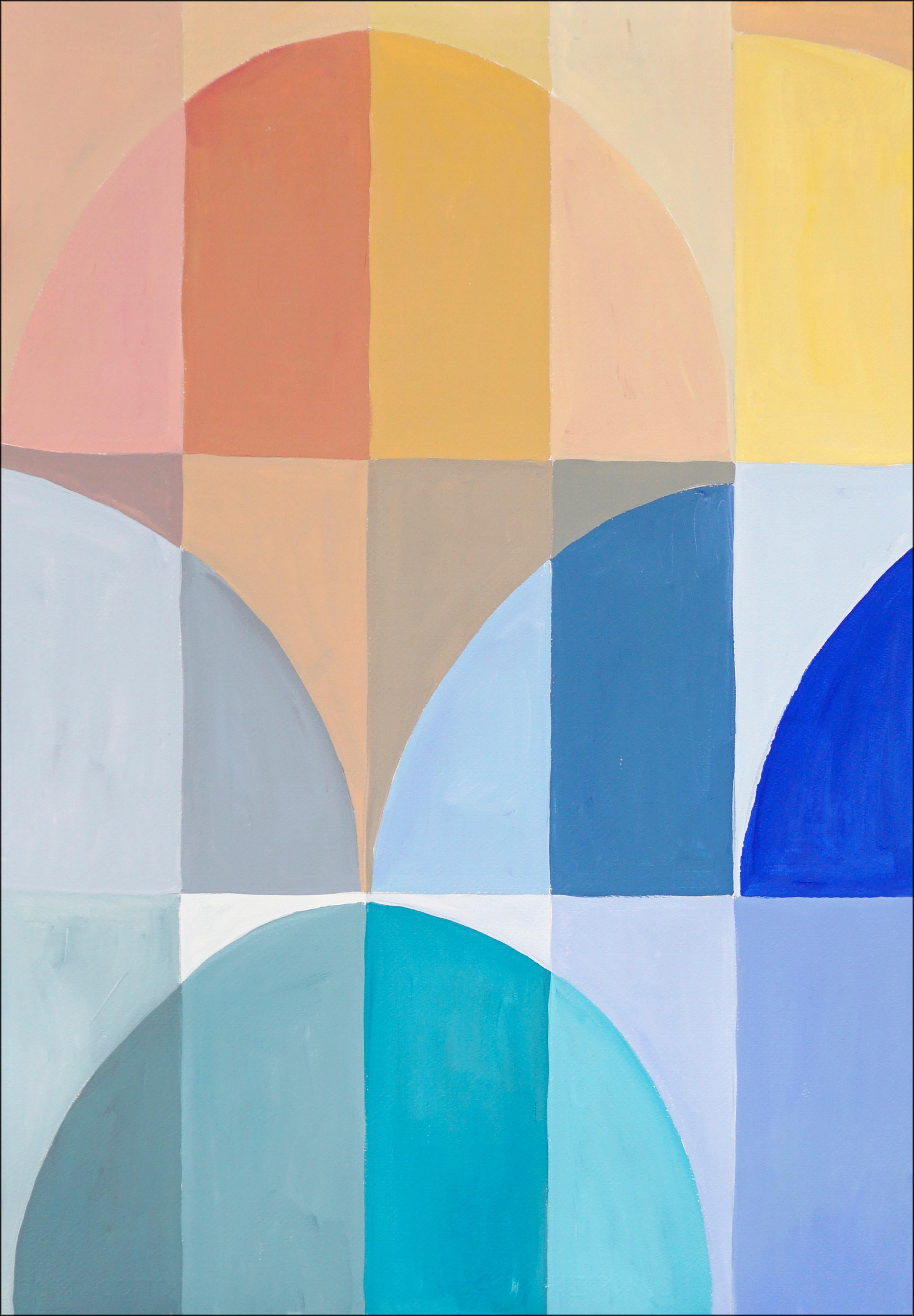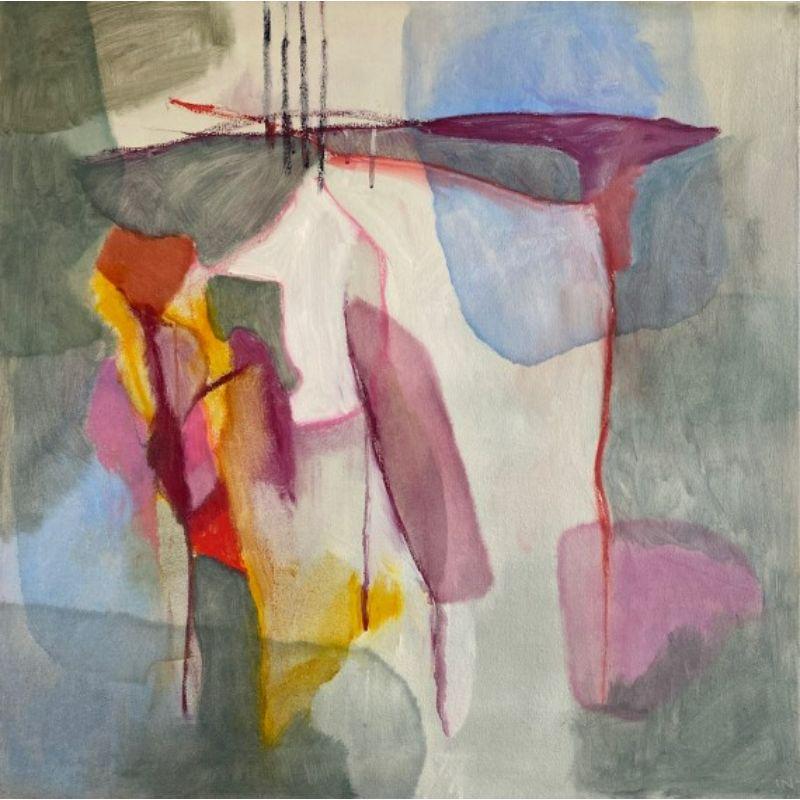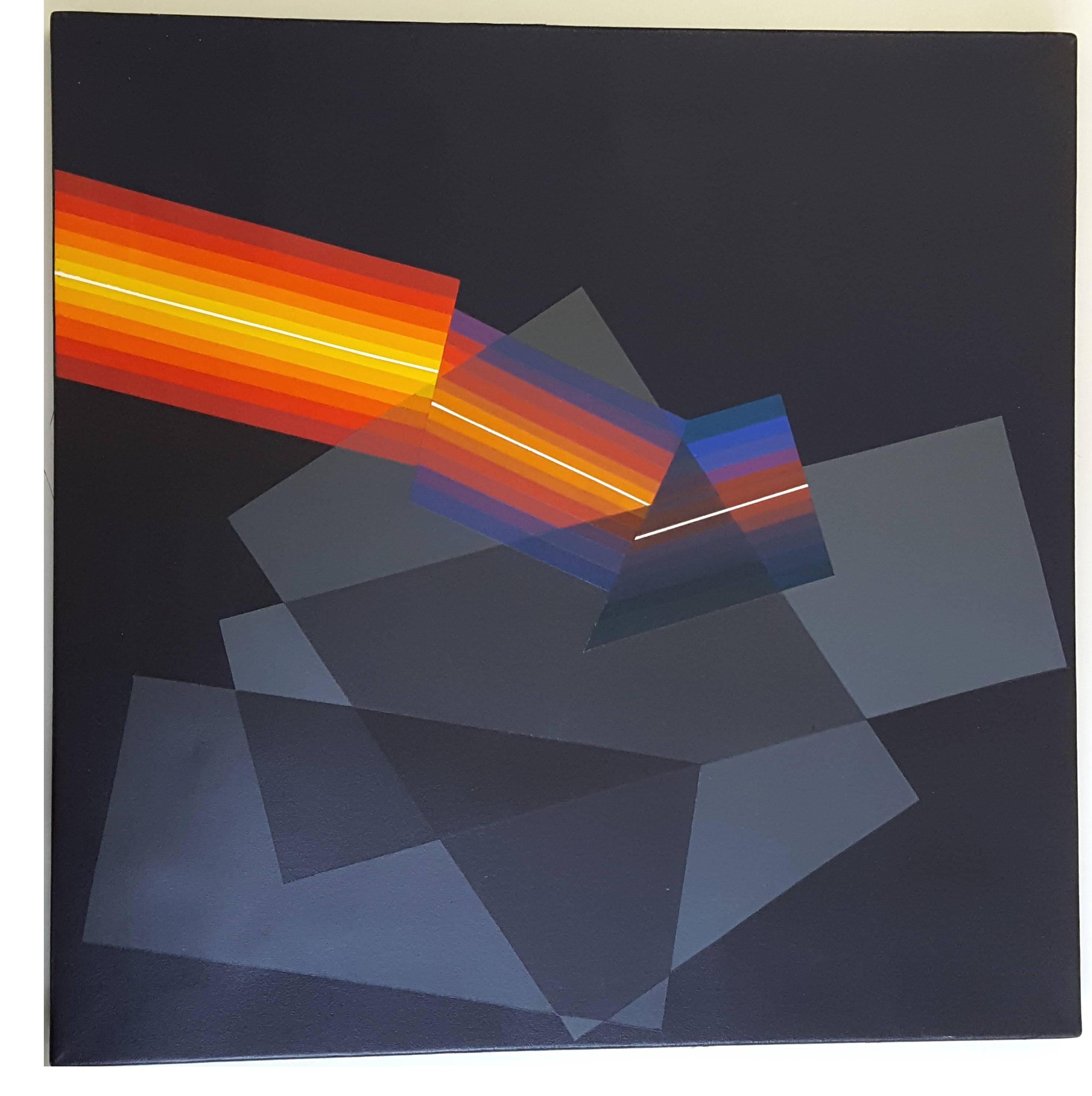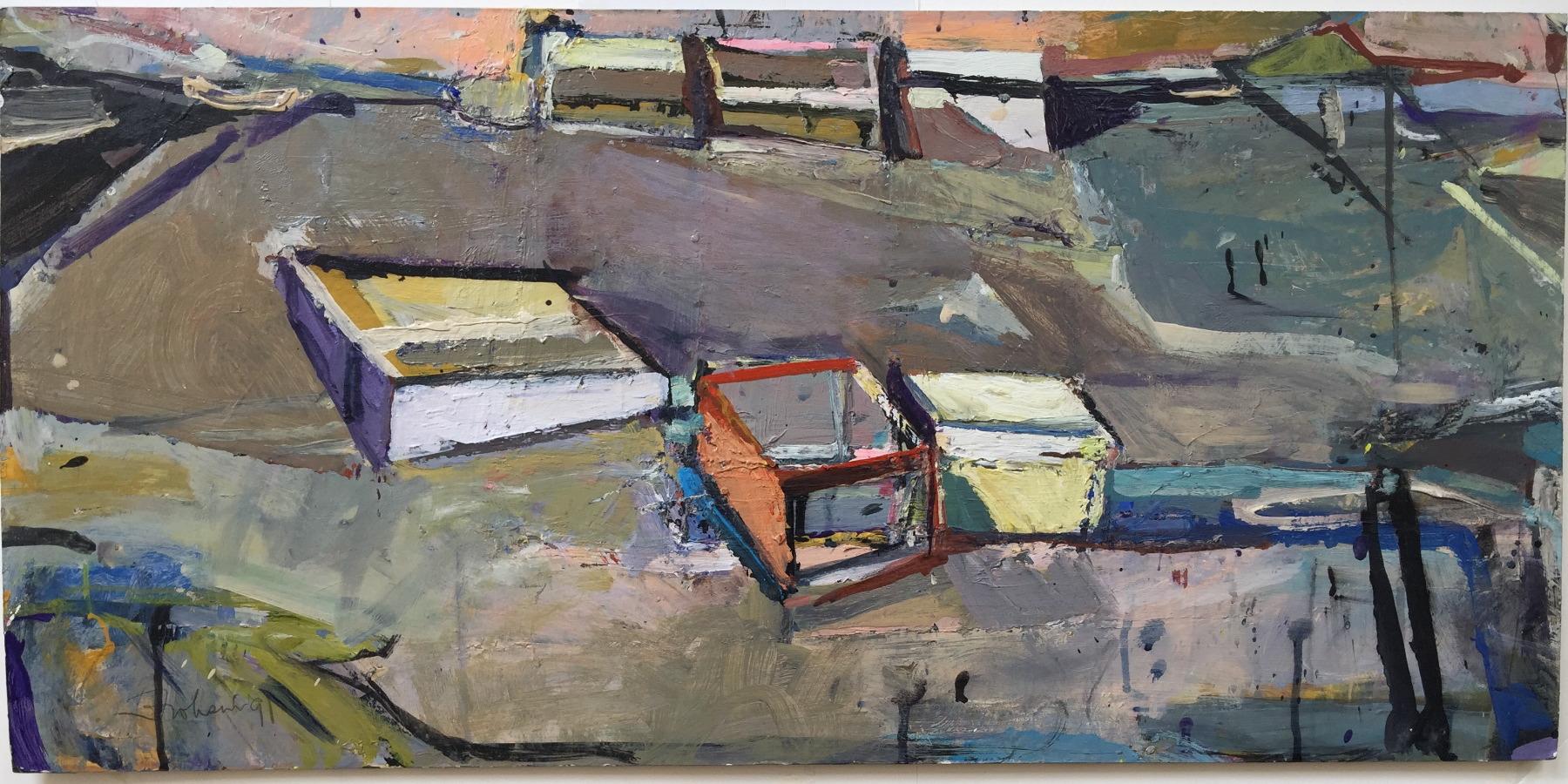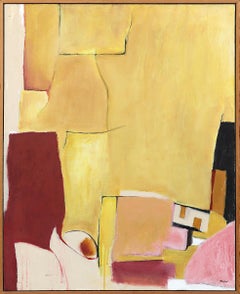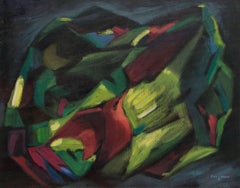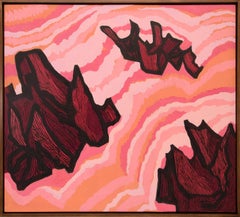
1940s Abstracted Geometric Mountain Farm Landscape Painting by Ralph Anderson
View Similar Items
Video Loading
Want more images or videos?
Request additional images or videos from the seller
1 of 11
Ralph Anderson1940s Abstracted Geometric Mountain Farm Landscape Painting by Ralph Andersoncirca 1940
circa 1940
About the Item
- Creator:Ralph Anderson (1929, American)
- Creation Year:circa 1940
- Dimensions:Height: 27.875 in (70.81 cm)Width: 33.25 in (84.46 cm)Depth: 1.125 in (2.86 cm)
- Medium:
- Movement & Style:
- Period:
- Condition:
- Gallery Location:Denver, CO
- Reference Number:Seller: 214081stDibs: LU2736615262
About the Seller
5.0
Platinum Seller
These expertly vetted sellers are 1stDibs' most experienced sellers and are rated highest by our customers.
Established in 1979
1stDibs seller since 2013
Typical response time: 5 hours
More From This SellerView All
- Mesa Verde, 1980s Abstract Landscape Oil on Canvas Painting, Yellow, Pink, GoldLocated in Denver, COAbstract oil on canvas signed and titled 'Mesa Verde' by Wilma Fiori (1929-2019) painted November 17, 1988. Painted in bright yellows, gold, pink, red, and...Category
1980s Abstract Abstract Paintings
MaterialsCanvas, Oil
- Abstract Colorado Mountain Landscap, Modernist Painting Green Pink BlueBy Zona WheelerLocated in Denver, COOriginal 1949 mid-century modern semi-abstract painting of Colorado Mountains by Kansas woman artist, Zona Wheeler (1913-1998) with shades of gree...Category
Mid-20th Century Abstract Abstract Paintings
MaterialsOil
- Jagged Sea, 1960s Abstract Landscape Painting, Tones of Pink, Red, OrangeBy Margo HoffLocated in Denver, COAbstract acrylic on board painting by Margo Hoff (1910-2008) titled 'Jagged Sea'. Outer dimensions measure 37.5 x 41.5 x 2 inches. Image dimensions measure 36 x 40.25 x 1 inches. Provenance: Estate of the artist Painting is in good condition - please contact us for a detailed condition report. About the Artist: Born Oklahoma 1910 Died New York 2008 A prolific artist, Margo Hoff’s exquisite style evolved throughout her career yet was always rooted in the events, people, and places in her life. The human experience was her sole focus, expressed through her eyes alone. Born in 1910 in Tulsa, Oklahoma, Hoff began creating white, clay animals at a young age, giving them to her friends and family. At eleven she contracted typhoid fever and was bedridden for a summer. During her convalescence, she drew and made cutouts, and it was during this time that her bold, artistic imagination came alive. She began formal art training in high school and continued her education at the University of Oklahoma, Tulsa. In 1933 she moved to Chicago and attended the National Academy of Art and the School of the Art Institute of Chicago. Between 1933 and 1960, her Chicago years, Hoff’s work was deeply rooted in a figurative, regionalist style. She often used elements of magical realism, and many of her paintings have dreamlike qualities. As a child she learned about color by grinding down rocks, plants, and berries. Her color pallet during the Chicago years is indicative of her early, life color experimentation as she consistently used warm, earth tones in her work. Hoff was a born adventurer and traveled extensively. She lived, worked, taught, and painted in Europe, Mexico, Lebanon, Uganda, Brazil, and China. She also showed at the Denver Art Museum’s Annual Western Exhibitions in 1952, 54, 56 and 57. In 1957 she showed along-side Colorado modernist Vance Kirkland at the Denver Art Museum’s exhibition, Man’s Conquest of Space. What was once a focus on the representational, her work began to change after 1957 when she saw Sputnik in its orbit around Earth. At that moment, feet firmly placed on the ground, she was able to imagine herself in space, looking down from the cosmos, and what she saw was an abstracted world. She then had the opportunity to peer into an electron microscope where once again she was looking down into what seemed to be a realm of pure abstraction. These two events profoundly changed her perspective and she began to move from figural painting to abstract, geometric collage. In 1960, Hoff moved to New York City and she began creating collages. Placing the canvas on the ground, and working from all sides, she used strips of painted paper and tissue, and later painted pieces of canvas, glued onto the canvas surface, building layer upon layer, shape against shape, “action of color next to stillness of color.” She believed these simplified, abstracted forms held the spirit of the subject in the same way poetry reduces words to their essence. These pieces range from aerial cityscapes, to dancers in motions, to flora...Category
1960s Abstract Landscape Paintings
MaterialsAcrylic, Board
$7,996 Sale Price20% Off - 1945 Abstract Landscape with Waterfall Watercolor Painting, Modernist LandscapeBy Eve DreweloweLocated in Denver, COWatercolor on paper painting by Eve (Van Ek) Drewelowe titled "The Champagne Cascades, Crescendos, Crashes" from 1945. An abstract landscape scene of a waterfall with white, yellow, and black. Presented in a custom gold frame, outer dimensions measure 43 ¾ x 33 ¾ x ½ inches. Image size is 29 ¾ x 19 ¾ inches. Painting is clean and in very good vintage condition - please contact us for a detailed condition report. Provenance: Private collection, Denver, Colorado Expedited and international shipping is available - please contact us for a quote. About the Artist: A painter and sculptor, Eve Drewelowe was the eighth of twelve children and grew up on a farm with a tomboyish spirit. Her farm duties did not permit her to take art classes in her youth that she later felt would have hindered the development of her artistic style. Although her father died when she was eleven, he imparted to her reverence for nature and a true love of the earth, values later reflected in her western oil and watercolor landscapes. She attended the University of Iowa at Iowa City on scholarship, receiving her B.A. degree in graphic and plastic arts in 1923. After graduation and against the advice of her art professor, Charles Atherton Cumming who believed that matrimony ended a woman’s painting career, she married fellow student Jacob Van Ek. While he pursued his doctorate in political science, she enrolled in graduate school at the University of Iowa for her M.A. degree in painting and the history of art. At that time her alma mater was one of the few universities in the United States offering an advanced fine arts degree, and she was its first graduate, receiving her degree in 1924. That year the Van Eks moved to Boulder, Colorado, where Jacob had obtained a position as an assistant professor at the University of Colorado. Five years later he became the Dean of the College of Arts & Sciences, a position he held until 1959. Eve briefly studied at the University. In 1927 and 1928 she taught part-time at the University’s School of Engineering and a decade later summer courses (1936 and 1937) in the University’s Department of Fine Arts. In 1926 she became a charter member of the Boulder Artists Guild and participated in its inaugural exhibition. Like many American artists of her generation, she helped foster an art tradition outside the established cultural centers in the East and Midwest. Her professional career spanning six decades largely was spent in and around Boulder. There she produced more than 1,000 works of art in oil, watercolor, pen and ink, and other media in styles of impressionism, regionalism, and abstraction. She devoted a considerable part of her work to Colorado, Wyoming, and Arizona subject matter depicting colorful and fantastic landscapes pulsating with energy and untouched by humans. Excited by what she saw, the wide open spaces made her feel like a modern-day pioneer. In discussing her work, she once said, “What really motivated me in my youth, in my growth, in maturity was my desire to captivate everything. I put on canvas an eagerness to possess the wonder of nature and beauty of color and line – to encompass everything, not to let anything escape.” Before World War II she and her husband took two international trips that had far-reaching consequences for her career, exposing her to the arts and cultures of countries in Asia and Europe. The first in 1928-29 was an extensive excursion in the Far East for which her husband had received a scholarship to study and report on the socioeconomics of Japan, Korea, China, the Philippines, the Dutch East Indies and India. The year after their return she had her first solo show at the University of Colorado’s library gallery. Discussing the twenty-six oils and sixteen ink drawings on view representing sixteen different countries, the Christian Science Monitor reviewer noted: “The pictures have a wide range and are far from being stereotyped in subject matter, being personal in choice. The ink-brush drawings are spontaneous, well balanced, and striking in their masses, giving the sense of having been done on the spot.” Her second trip with her husband and a party from the Bureau of University Travel had a four-month itinerary that included England, Denmark, Finland, Russia, Turkey, Greece, Italy, and France. It yielded seventeen oils and twenty-six ink-wash drawings which she exhibited in a February 1936 solo show at the Boulder Art Association Gallery. Her creative output in the 1930s attracted the attention of the critic for the Parisian Revue des Arts whose observations were translated and printed in the Boulder Daily Camera on June 10, 1937: To present our readers Eve Van Ek [at that time she signed her work with her married name] …is to give them an opportunity to admire a talent of multiple aspects. The eclecticism of her art passes from a rich skill in forceful oil painting of fine strokes of precision best seen perhaps in her treatment of mountain subjects, of craggy cliffs hewn as in nature, through pen and ink or lithographic crayon design, water color, and occasionally embroidery and sculpture, to the delicate perfection of detail of the miniature. The lofty mountains of Colorado have supplied her with extremely interesting subjects for study; she knows how to represent in an entirely personal way the varying scenes and the curious restlessness of the terrain. While pursuing her art, she also was a dean’s wife. The responsibilities attached to that position proved too restrictive, contributing to a grave illness. She underwent an operation in 1940 at the Mayo Clinic for a gastric polyp, a dangerous procedure at that time. Although she had expected to come back to Boulder “in a box,” the surgery proved successful. Depicting her painful hospital stay in a watercolor, Reincarnation, she reflected on the transformative experience of piecing her life back together. That October she received encouragement from the review of her solo exhibition at the Argent Gallery in New York written by Howard Devree, art critic for the New York Times who said: “The whole exhibition is stimulating…Boats, fences and even flowers in the canvases of Eve Van Ek…seem struggling endlessly to escape from the confines of the frame.” Her watercolor, Crosses, Central City (1940), illustrates her work described in the New York review. The composition pulsates with energy conveyed by the modernist technique of juxtaposing the scene’s various angles, distorting the shapes and positions of the structures, additionally highlighting them with bright colors. The telephone poles at various angles represent crosses figuratively marking a Way of the Cross symbolized by the wooden stairs...Category
1940s Abstract Landscape Paintings
MaterialsPaper, Watercolor
- Southwestern Landscape Painting, Lightning Storm over Mountains, Semi AbstractLocated in Denver, COOriginal vintage painting of a Lightning Storm, Southwestern Mountain Landcape. Oil painting on textured board by Morton Lawrence Schneider (1919-2000). This large scale semi abstrac...Category
20th Century American Modern Landscape Paintings
MaterialsOil, Board
- Central City, Colorado, 1950s Modernist Cityscape Oil Painting with BuildingsLocated in Denver, COOil on canvas modernist city scape painted circa 1950 by Paul K Smith (1893-1977) titled Central City, Colorado. Portrays a city scene of historic buildin...Category
1950s American Modern Landscape Paintings
MaterialsCanvas, Oil
You May Also Like
- Huge French Modernist Signed Oil Abstract Painting of City Scape Orange & BlueLocated in Cirencester, GloucestershireThe French City French School, circa 1970's, signed lower corner oil painting on canvas: 31 x 38.5 inches framed: 23.5 x 32 inches condition: sound condition though with minor crack...Category
Mid-20th Century Abstract Geometric Landscape Paintings
MaterialsCanvas, Oil
- CONTEMPORARY FRENCH CUBIST ABSTRACT GEOMETRIC COMPOSITION OF OLD TOWNLocated in Cirencester, GloucestershireArtist/ School: French School, signed and dated 2010. Title: titled verso. Medium: oil painting on canvas Size: painting: 25.5 x 32 inches Provenance: private collection, ...Category
21st Century and Contemporary Abstract Geometric Abstract Paintings
MaterialsCanvas, Oil
- Camouflage Overlap, Triangles on Black Background, Pink Terrazzo Tile PatternsBy Natalia RomanLocated in Barcelona, ESThis series of hand painted acrylic paintings by Natalia Roman are inspired by the colors and textures of Italian terrazzo tiling. The patterns created c...Category
2010s Abstract Geometric Abstract Paintings
MaterialsOil Pastel, Oil, Acrylic, Watercolor, Gouache
$576 Sale Price20% OffFree Shipping - Vectorscape IBy Vargas-Suarez UniversalLocated in New York, NYVectorscape I, 2015 oil, oil enamel and acrylic enamel on wood panels 10 x 20 feet (in 12 parts) Rafael Vargas-Suarez (born 1972), more commonly known as Vargas-Suarez Universal, is a contemporary artist living and working in Brooklyn, New York. Born in Mexico City, Vargas-Suarez was raised in the Houston suburb of Clear Lake City, adjacent to the Johnson Space Center. From 1991 to 1996 he studied astronomy and art history at the University of Texas at Austin[citation needed] and moved to New York City in 1997. He is primarily known for large-scale wall drawings, paintings, drawings, and photographs that draw inspiration from architecture, astronomy, biology, and medicine. His work has been or is currently featured in numerous exhibits, such as the Hudson River Museum in Yonkers, New York, the Jersey City Museum in Jersey City, New Jersey, the Thomas Erben Gallery in New York City, the Galeria Ramis...Category
21st Century and Contemporary Abstract Geometric Abstract Paintings
MaterialsEnamel
Price Upon Request - Large Original Abstract Colorful Oil Painting Israeli Kibbutz Landscape ShemiBy Calman ShemiLocated in Surfside, FLLife in Nature Canvas measures 31.5 X 39.5 (I believe this is oil it might also be acrylic.) Hand signed recto and signed and titled verso. Calman Shemi, sculptor and painter, was born in Argentina in 1939. A graduate of the School of Sculpture and Ceramics in Mendoza, he studied under the Italian-Argentinean sculptor Libero Badii whom he credits with putting him on the right path. “He taught me principals, not only related to sculpture, but human and philosophic principals. Shemi also carefully studied the work of such masters as Picasso, Caravaggio, Frank Stella and Matisse. “From each one of these great artists I learned something from observing them,” he says. In 1961, at the age of 20, Shemi immigrated to Israel and joined Kibbutz Carmia of which he was a member for twenty years. There he worked in agriculture and also as a sculptor working with wood and clay. Several of his large-scale fiberglass and polyester projects are situated in public buildings. He was a student of German-Israeli sculptor Rudi Lehmann, a pioneer of the artistic movement known as “Canaanism.” Canaanite art was an effort to create a direct relationship with the land, bypassing historic Jewish connotations—hence the land’s primordial name is used. Canaanite works, with an emphasis on the inter-action of simple shapes, bear a deliberate resemblance to the sculpture and ritual art of early civilizations of the Middle East prior to Judaism, always with an eye to the fusion of man and the land itself. Though sculpture dominated his early years as an artist, in the mid ’70s Shemi developed the idea of the “soft painting” medium. Beginning with a color drawing done to scale, Shemi layers onto the drawing irregularly shaped pieces of variously textured and colored fabrics. Using a threadless 9,000-needle sewing machine, the fabrics are meshed to one another and to the background, resulting in vibrant carpet tapestry compositions infused with exuberant color and explosive movement. These are neither aubusson nor pile but more of a felt wall hanging...Category
1980s Abstract Geometric Abstract Paintings
MaterialsCanvas, Oil
- Oasis in The Desert, Abstract Geometric Landscape in Green, Blue, Earth TonesBy Natalia RomanLocated in Barcelona, ESThis abstract geometric acrylic painting is a vibrant and playful composition that draws inspiration from vintage Italian parasols. With a focus on bold, bright colors and clean lines, the painting features intersecting shapes and patterns that evoke the cheerful, summery vibe of a day spent lounging in the shade of a colorful umbrella. Details: Title: Oasis in The Desert...Category
2010s Abstract Geometric Abstract Paintings
MaterialsOil Pastel, Oil, Acrylic, Watercolor, Gouache
Recently Viewed
View AllMore Ways To Browse
Contact Us
Geometric Art Vintage
Ralph Vintage
Vintage Mountain Art
Green Mountains Painting
Vintage Geometric Abstract Art
Oil Painting White Mountains
Retro Farm Art
Abstract Farm Painting
Green Farm
White Abstract Painting Vintage
Vintage Framed Geometric Art
Retro Farm Paintings
Vintage Abstract Landscape Paintings
24x27 Painting
Anderson Oil
Vintage Geometric Painting
Anderson Painting Oil
